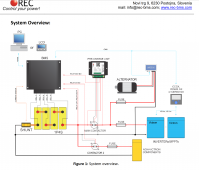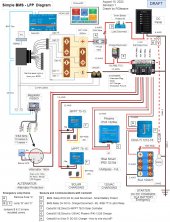Goboatingnow
Solar Enthusiast
- Joined
- Jul 3, 2022
- Messages
- 1,325
to broaden the discussion also as you need to look at industrial equipment rather then marine branded gear
for other components I have one of these on order https://www.connectorconcepts.com/lare12.html as the bi-stable relay has little current , but the issue is how to make it " fail safe "
as I have used Te connectivity 2219561-1 500A EV relays but these have a 600mA operating current ( which I drop to 300mA after initial pullin ) these are nice because they can fail open when the power fails
I have a design for a very rugged MOSFET using STY145N65M5 Mosfets ( 650V 138 A) switch that I will build later in the year but component availability is killing me right now
for other components I have one of these on order https://www.connectorconcepts.com/lare12.html as the bi-stable relay has little current , but the issue is how to make it " fail safe "
as I have used Te connectivity 2219561-1 500A EV relays but these have a 600mA operating current ( which I drop to 300mA after initial pullin ) these are nice because they can fail open when the power fails
I have a design for a very rugged MOSFET using STY145N65M5 Mosfets ( 650V 138 A) switch that I will build later in the year but component availability is killing me right now




